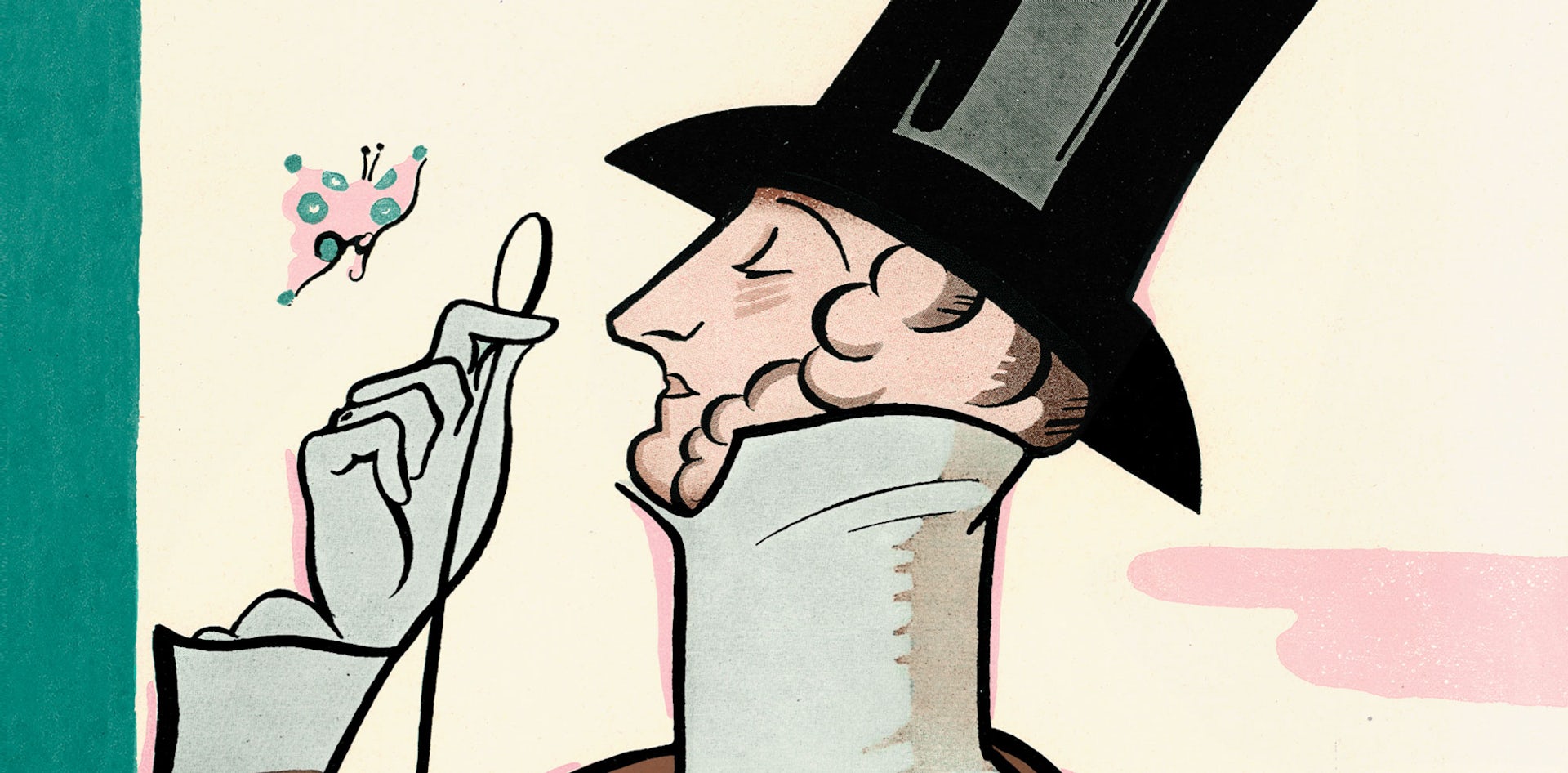Inside the New Yorker’s 100th anniversary issue
The New Yorker’s longtime art editor Françoise Mouly discusses the unique challenge of summing up a century of the iconic magazine in one issue and the year-long creative process behind its “cover extravaganza”
In 1925, the New Yorker’s founding editor Harold Ross envisioned the magazine as “a reflection in word and picture of metropolitan life”. A century on, and its irreverent tone and visual style have made it iconic in both the magazine world and wider culture. Wes Anderson famously even dedicated an entire cinematic world to the publication in his 2021 film The French Dispatch.
The team behind the New Yorker is fittingly celebrating its centenary with a flurry of activity, including an all-important range of anniversary merch, a weekly game inspired by its expansive archive of cartoons, and an exhibition of its most famous covers at L’Alliance New York, curated by its longstanding art editor Françoise Mouly.
At the heart of the celebrations is the 100th Anniversary Issue, which includes features such as editor David Remnick’s musings on the magazine from 1925 to today and contributor Jill Lepore on the letters of New Yorker editors and writers, as well as six special edition covers. Below, we hear about how the issue was brought to life.
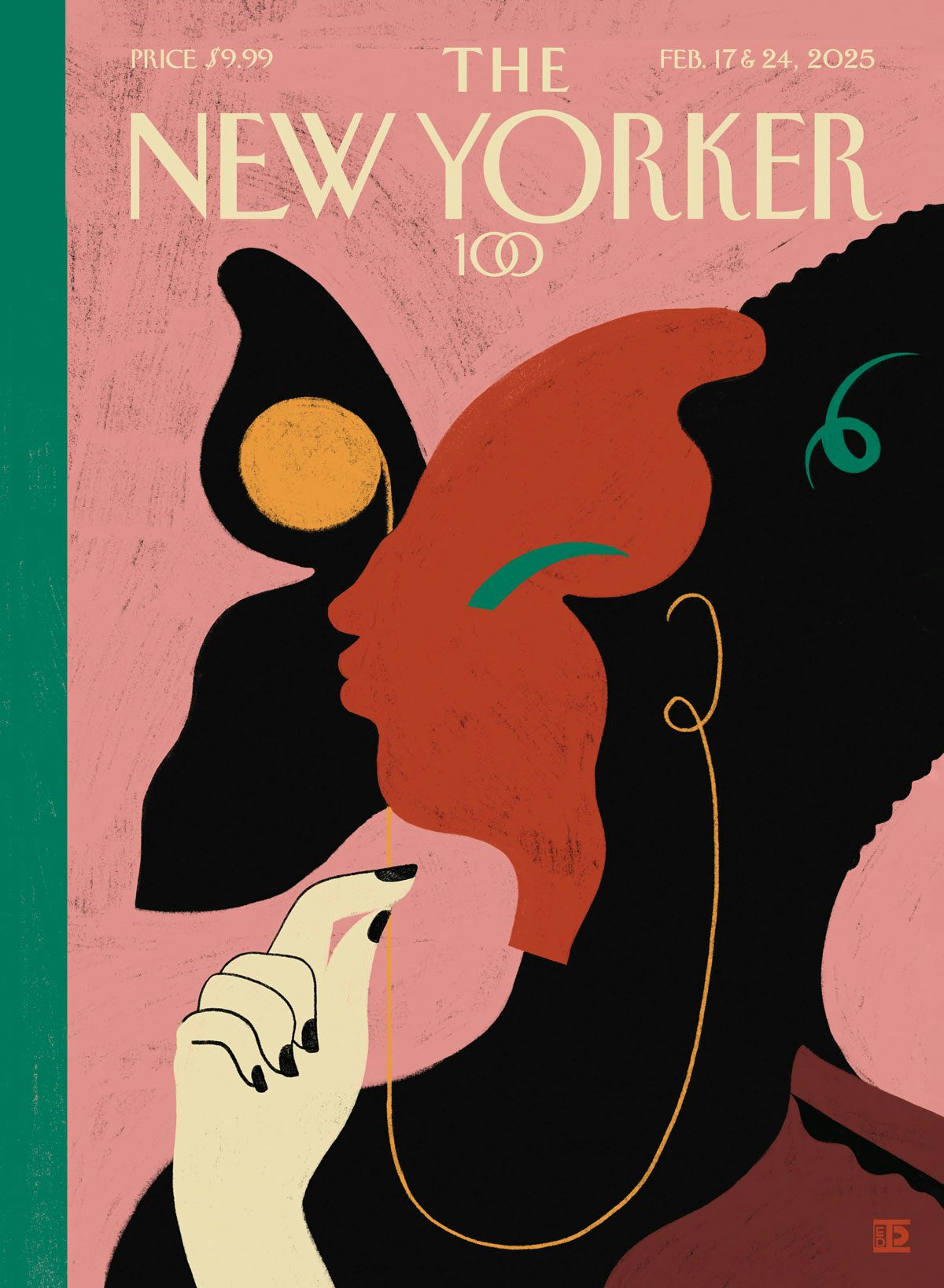
Creative Review: Was it a daunting prospect thinking how to celebrate a whole century of the New Yorker in a single issue?
Françoise Mouly: Well, yes, it was daunting, but we also had ample time to prepare — not always the case with a weekly. We started thinking about this moment over a year and a half ago, knowing we’d need to accomplish a few contradictory things: make everything about the magazine feel special while celebrating and emphasising what our readers love about the magazine.
Faithful readers can be very demanding. One of them wrote a postcard to David Remnick, the editor, every single day for a year to demand, beg, cajole, and otherwise suggest that the anniversary issue cover should be Eustace Tilley, our dandyish mascot from 1925 drawn by Rea Irvin — who was on the anniversary cover for decades. This was a tradition we’d replaced with modern takes on Tilley after I arrived, but this reader was insisting we be faithful to an older, quieter incarnation of the magazine.
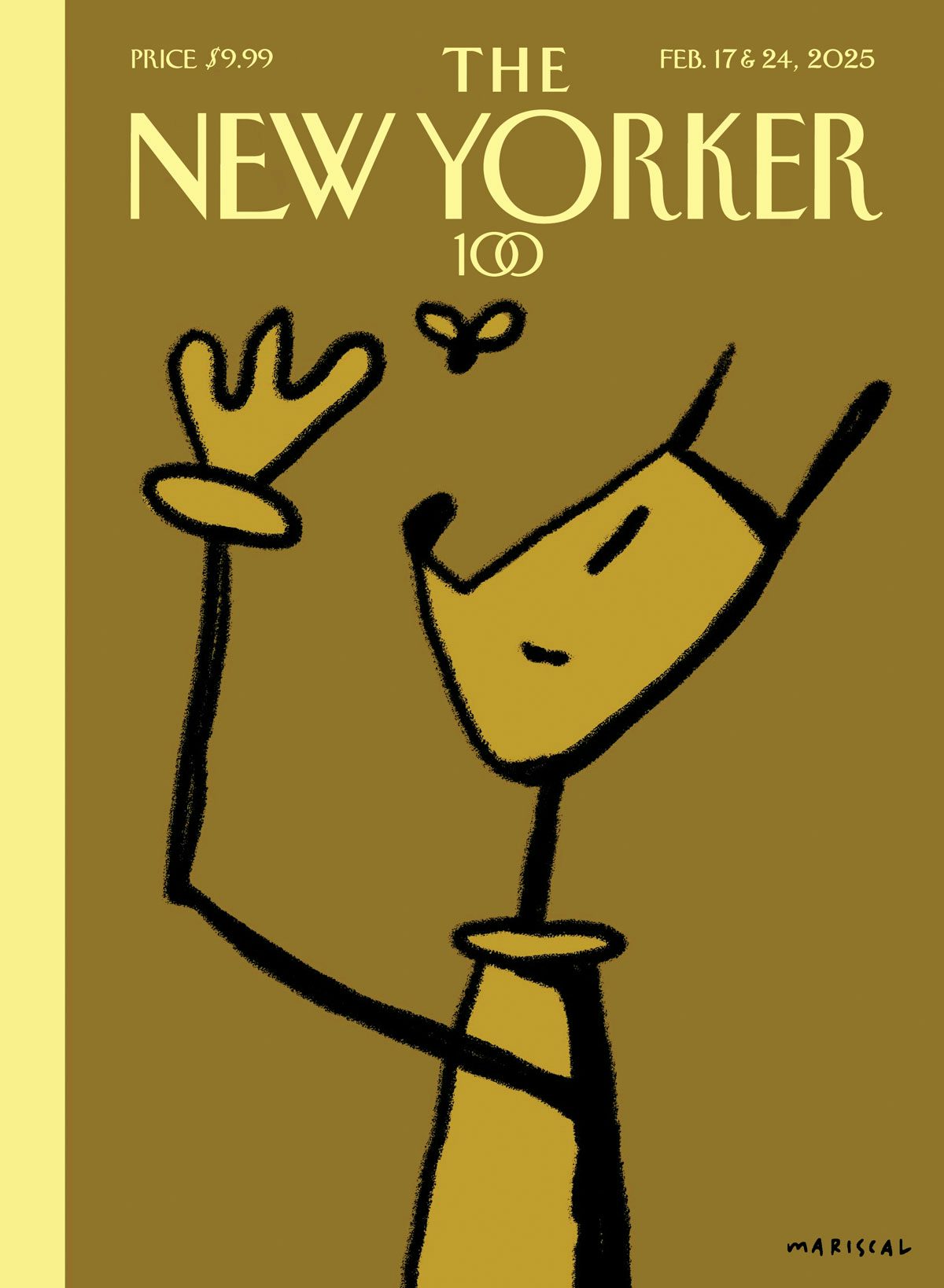
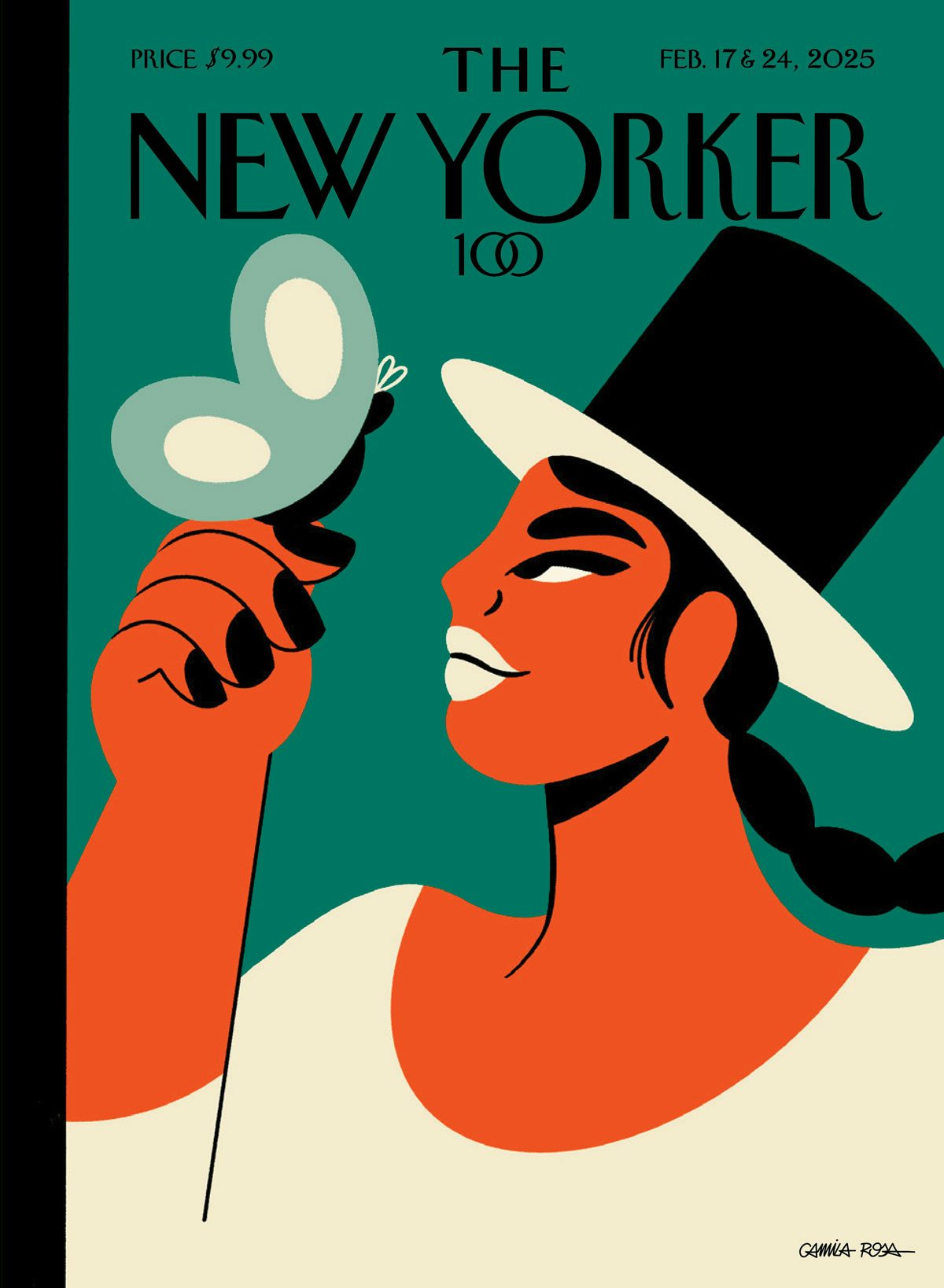
CR: What approach did you take to the art direction of the issue – was it the same process as a regular issue in principle?
FM: Imagine trying to stuff several special issues into one — that’s what it felt like. Thankfully, our art department is full of creative geniuses who were itching to flex their muscles. In art director circles, the New Yorker is famous (infamous?) for its rigidly formatted maquette. Many elements of our design, fonts and headers, derived from the early issues, repeat every week. We followed the same basic architecture as usual but we had fun playing within the constraints, sneaking in witty twists everywhere we could. The web team really went to town, building this gorgeous portal packed with magazine history. We’ll be in centenary mode all year, and it will live beyond this week’s issue.
CR: Tell us about your choice of cover artists and the individual covers.
FM: Well, our persistent postcard writer finally got his wish — but then, so did I. We ended up with what I’ve been calling our cover extravaganza. After 32 years here (yes, I’ve been around for nearly a third of the magazine’s history, which is slightly terrifying), I knew we needed something spectacular in print, regardless of our digital bells and whistles. So over a year ago, I showed my colleagues the kind of special covers we used to publish. For the 90th anniversary, for example, we launched what we called Nine for Ninety—nine artists doing their own interpretation of Tilley. For this 100th anniversary, I mocked up, with glue and scissors, a similar configuration with three covers. Lo and behold, the same advertiser came through again to support it, which was fantastic!
For the first cover, it had to be, of course, Rea Irvin’s dandy. The third cover is by another contemporary master, Kerry James Marshall. The four other covers in the second position (it’s a split on cover two) are by artists from all over the globe. One, Javier Mariscal, has been my friend since the late 70s; another, Camila Rosa, is a young designer from Brazil whom I recently discovered. Because each artist thought up their own idea, the multiple covers are a good representation of the diversity of approaches that is the hallmark of the magazine. Our forte is that we trust our contributors – that’s how we get the best people to do their best work. These multiple covers are the perfect New Yorker cocktail of tradition and innovation – it makes me hopeful about the future.
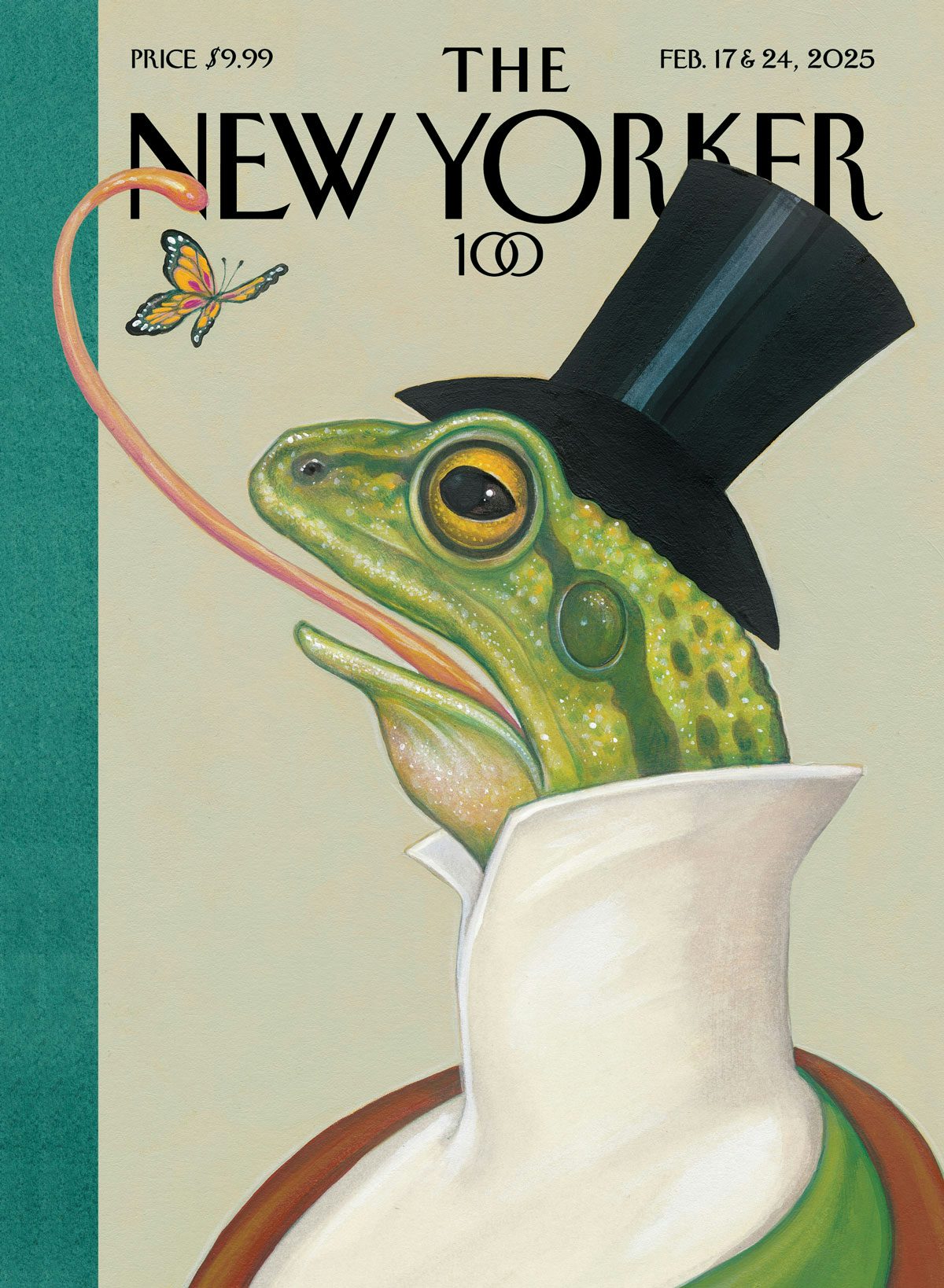

CR: Are there any easter eggs that readers should look out for in the issue?
FM: The whole thing is basically one giant easter egg hunt for New Yorker nerds. If you know your way around our visual DNA, you’ll get a kick out of seeing how we’ve messed with all the familiar pieces. Think of it as a century-old institution letting its hair down — while keeping its monocle firmly in place, of course.
CR: Tell us a bit about Covering The New Yorker, the exhibition you’ve curated at L’Alliance New York to coincide with the anniversary.
FM: We’re pulling back the curtain on something readers rarely get to see: the original artwork behind our iconic covers. We managed to gather over 100 pieces from artists and collectors, but I wanted to show even more than that. For every cover that makes it to print, there’s a fascinating trail of sketches that didn’t quite make it — so I literally brought in the bulletin boards from my office, plastered with rejected sketches.
These covers aren’t just pretty pictures; they’re a platform for bold visual storytelling and a commentary on everything from global politics to intimate moments. L’Alliance gave us this fantastic opportunity to let people peek behind the scenes and really understand the artistry, storytelling and editorial decisions that have turned these images into cultural touchstones.
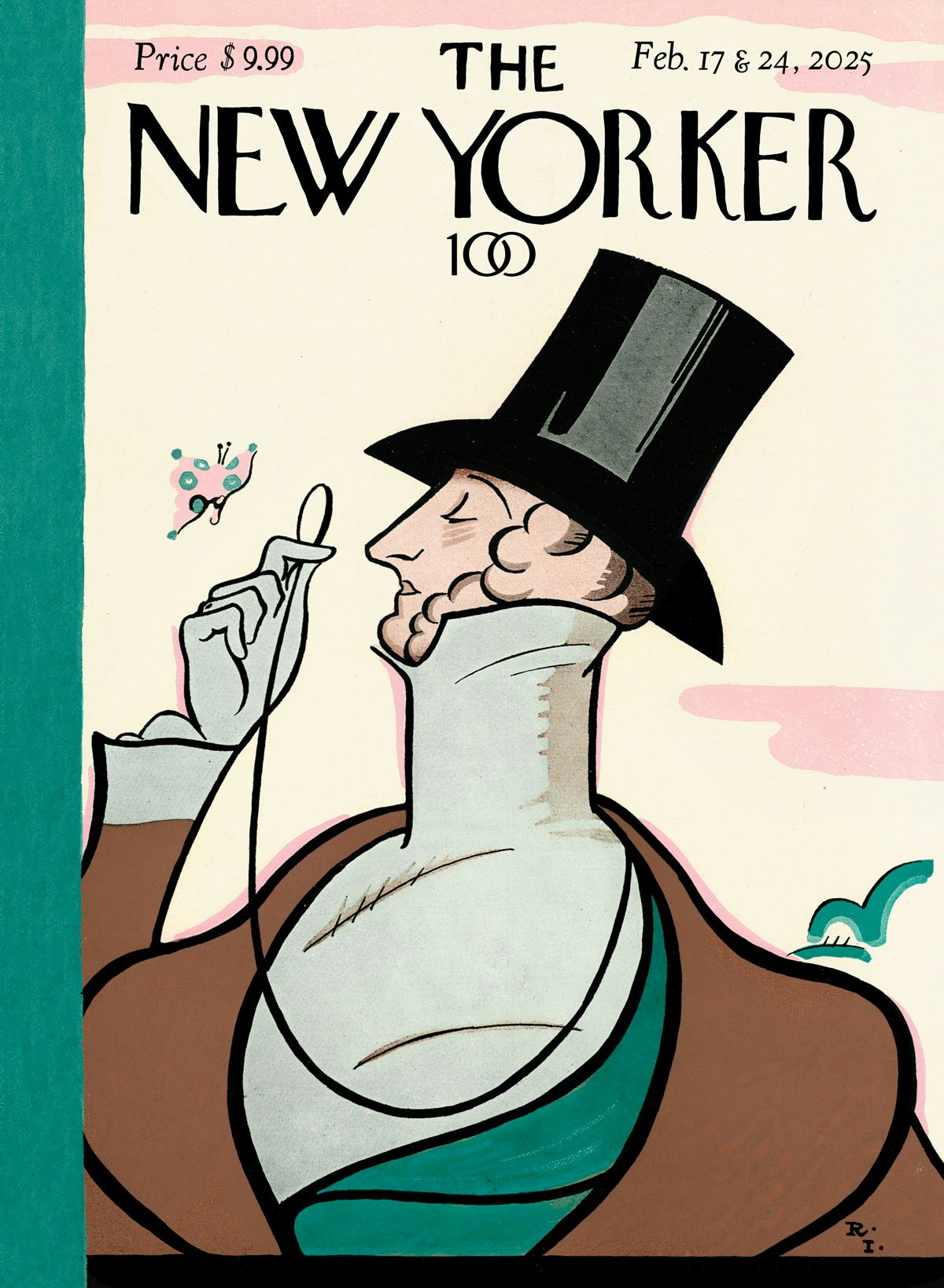
The 100th Anniversary Issue is out on February 17; newyorker.com/100
